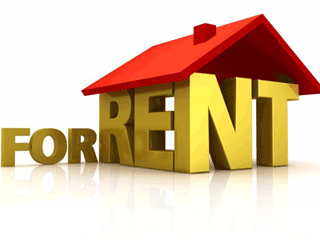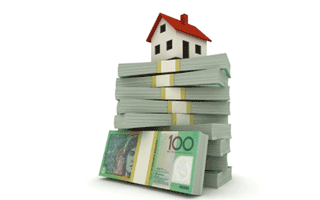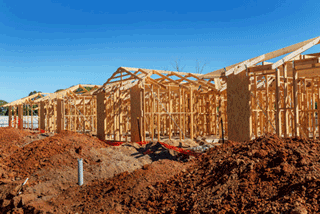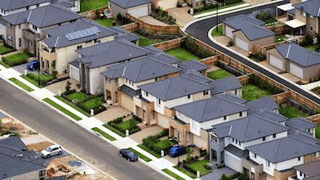Quote of the Week
“This strong level of consumer confidence combined with the demographic shift to regional areas is driving ongoing demand for new detached homes. Record low interest rates and rising house prices have sustained market confidence into 2021.”
HIA economist Angela Lillicrap
Vacancies Tight In Most Cities
 Vacancy rates remain below 1% in five of the eight capital cities and are 1.5% in Brisbane, according to the monthly report from SQM Research. Above-average vacancies in Sydney and Melbourne mean the national average rate remained at 2% in February.
Vacancy rates remain below 1% in five of the eight capital cities and are 1.5% in Brisbane, according to the monthly report from SQM Research. Above-average vacancies in Sydney and Melbourne mean the national average rate remained at 2% in February.
SQM’s Louis Christopher says vacancies edged higher to 4.5% in Melbourne which remains “weighed down by underwhelming demand for rental accommodation”. Sydney’s vacancy rate rose 0.1 points to 3.3%.
Elsewhere, in Perth, Adelaide, Canberra, Darwin and Hobart, the vacancy rate is below 1.0%. Brisbane’s vacancy rate also remained tight, down to 1.5% in February from 1.7% January. Christopher says it is very much a landlord’s market in regional Australia.
“We are still recording strong interest from tenants in larger properties in outer suburban locations as well as wider regional Australia,” he says. “Investment property owners in Darwin or Perth have also enjoyed a strong year of rental returns.”
Regional Prices Up, Affordability Down
 Rising house prices in many regional centres means housing affordability has declined more in Regional Australia than in the capital cities, according to the Housing Industry Association Affordability Index.
Rising house prices in many regional centres means housing affordability has declined more in Regional Australia than in the capital cities, according to the Housing Industry Association Affordability Index.
HIA economist Angela Lillicrap says the regional index fell 3.7% in the latest quarter to return to the level it was in December 2019. The index is calculated quarterly for all capital cities and regional areas and takes into account dwelling prices, interest rates and wages.
“With the onset of COVID-19, consumer preferences have shifted towards detached housing and regional areas,” Lillicrap says. “Migration data shows more Australians left the capital cities in each of the first three quarters of 2020 than at any other time since records began in 2001. Because of this shift in population, house prices in regional areas outperformed the capital cities over the past year.”
Among the cities, Darwin experienced the sharpest decline in affordability during the quarter, followed by Brisbane and Adelaide.
Stockland Tips Lasting Sales Boom
 Australia’s largest residential developer Stockland is seeing a lasting home sales surge that should push well beyond the end of government stimulus packages.
Australia’s largest residential developer Stockland is seeing a lasting home sales surge that should push well beyond the end of government stimulus packages.
The lift in new home sales in February, driven by an annual increase of 2.4% across Victoria, NSW, Queensland and Western Australia, shows the industry has shrugged off the virus crisis, Stockland says. New houses on the outskirts of major cities and in regional areas are selling well alongside existing stock.
Stockland Communities chief executive Andrew Whitson says the HomeBuilder stimulus “has been a powerful economic measure, helping to generate jobs and investment”.
But the key drivers supporting demand are a shift in customer preferences to lower-density living, limited land availability and ready access to cheap finance. Whitson says these factors should offset the impact of reduced net overseas migration.
“The roll-off of HomeBuilder is likely to moderate second half 2021 sales in the eastern states, but sales are expected to remain strong with price growth over 2021,” he says.
Sentiment Back Near 10yr High
 The Westpac-Melbourne Institute Index of Consumer Sentiment increased 2.6% in March, with the Index now just 0.2 points below the December level which was a 10-year high.
The Westpac-Melbourne Institute Index of Consumer Sentiment increased 2.6% in March, with the Index now just 0.2 points below the December level which was a 10-year high.
The main factors driving the index are improving economic prospects, Australia’s success in containing the virus, the promise of vaccines bringing an end to the pandemic and stimulatory government policies.
The “time to buy a dwelling” index slipped 3.6% – a fourth consecutive fall to be down 11.9% from the peak in November. “We have found this Index to be closely linked to affordability in the past,” the report says. “The decline suggests resurgent prices are already starting to curb buyer interest.”
On the other hand, the House Price Expectations Index increased 3.1% in March to a new seven-year high, 12.5% above its pre-pandemic level. The Index is a lead indicator of the confidence of investors, whose presence in the early stages of the housing boom has been overshadowed by owner-occupiers.
House price expectations are particularly buoyant in NSW, Queensland and WA.
New Home Sales Surge
 Sales of new homes in the three months to February topped last year by 60%, as the Federal Government’s HomeBuilder program boosted demand for detached housing, says HIA’s economist Angela Lillicrap.
Sales of new homes in the three months to February topped last year by 60%, as the Federal Government’s HomeBuilder program boosted demand for detached housing, says HIA’s economist Angela Lillicrap.
The HIA New Home Sales report – a monthly survey of the largest volume home builders in the five largest states – is a leading indicator of future home construction.
Lillicrap says HomeBuilder was the catalyst for improving consumer confidence in the housing market. A surge in sales was observed following the announcement of HomeBuilder in June 2020, which lead to strong sales through to the end of 2020.
“In December 2020, there was a near record volume of new home sales as households rushed to finalise contracts to build a new home before the end of the $25,000 grant,” she says. “The full impact of the extension of the HomeBuilder grant, at a value of $15,000, will not be observed until the end of March.”
The strongest surge in new home sales occurred in South Australia, up 150%, followed by Victoria (69%) and Queensland (60%).




